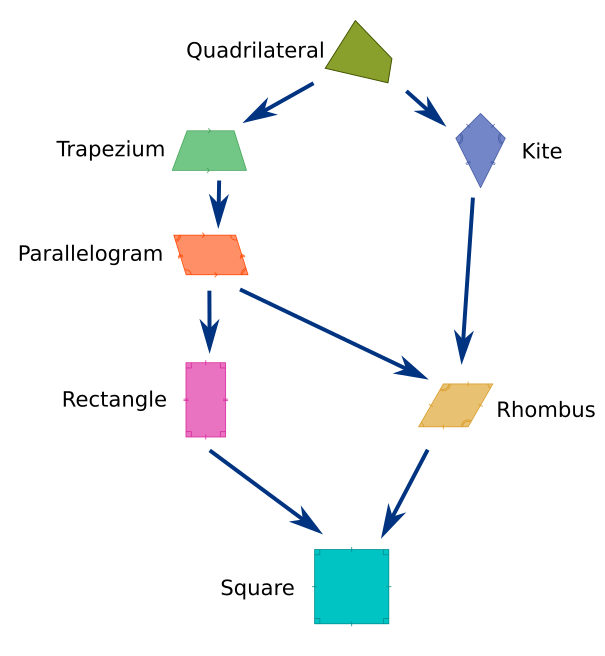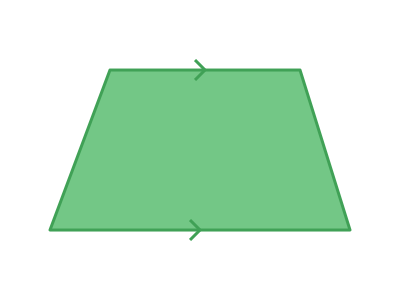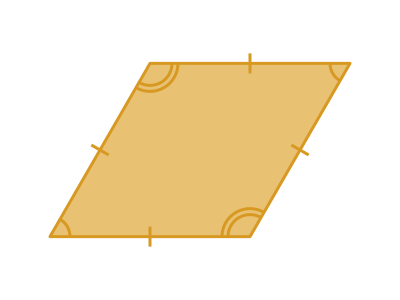Quadrilateral family tree
Categories: gcse geometry

We previously looked at the different types of quadrilaterals. In this article, we will look at how these different shapes relate to each other, in the form of a family tree.
As we go down the tree, each new shape is a special type of its parent (or parents). It inherits its parent's characteristics while also adding new ones of its own.
Here is the family tree:

Quadrilateral
A quadrilateral is any shape with four sides. It is the most general type of four-sided shape.
Trapezium

A trapezium is a special type of quadrilateral where one pair of opposite sides are parallel.
Parallelogram

A parallelogram is a special type of trapezium where both pairs of opposite sides are parallel.
Each pair of opposite sides have the same length.
Kite

There are two equivalent definitions of a kite.
- A kite is a special type of quadrilateral that has two pairs of equal adjacent sides.
- A kite is a special type of quadrilateral in which one of its diagonals is a line of symmetry.
Rhombus

A rhombus is a special type of parallelogram and also a special type of kite.
- A parallelogram has two pairs of opposite sides that have equal lengths.
- A kite has two pairs of adjacent sides that have equal lengths.
In a rhombus, all four sides are equal. This allows it to satisfy both conditions at the same time.
Rectangle

A rectangle is a special type of parallelogram that has four 90-degree angles. Like a parallelogram, the two pairs of opposite sides have equal lengths.
Square

A square is a special type of rectangle that has all four sides the same length.
It is also a special type of rhombus that has four 90-degree angles.
A square inherits its four 90-degree angles from the rectangle and its four sides of equal length from the rhombus.
All squares are the same shape. This means a square is the most specialised quadrilateral.
See also
- Regular polygons
- Interior and exterior angles of a polygon
- Triangles
- Quadrilaterals
- Pentagons - polygons with 5 sides
- Hexagons - polygons with 6 sides
- Heptagons - polygons with 7 sides
- Octagons - polygons with 8 sides
- Nonagons - polygons with 9 sides
- Decagons - polygons with 10 sides
- Hendecagons - polygons with 11 sides
- Dodecagons - polygons with 12 sides
- n-gons - polygons with any number of sides
- Other types of polygon
- Star polygons

Join the GraphicMaths Newletter
Sign up using this form to receive an email when new content is added:
Popular tags
adder adjacency matrix alu and gate angle answers area argand diagram binary maths cartesian equation chain rule chord circle cofactor combinations complex modulus complex polygon complex power complex root cosh cosine cosine rule countable cpu cube decagon demorgans law derivative determinant diagonal directrix dodecagon eigenvalue eigenvector ellipse equilateral triangle euler eulers formula exercises exponent exponential exterior angle first principles flip-flop focus gabriels horn gradient graph hendecagon heptagon hexagon horizontal hyperbola hyperbolic function hyperbolic functions infinity integration by parts integration by substitution interior angle inverse hyperbolic function inverse matrix irrational irregular polygon isosceles trapezium isosceles triangle kite koch curve l system line integral locus logarithm maclaurin series major axis matrix matrix algebra mean minor axis n choose r nand gate net newton raphson method nonagon nor gate normal normal distribution not gate octagon or gate parabola parallelogram parametric equation pentagon perimeter permutations polar coordinates polynomial power probability probability distribution product rule proof pythagoras proof quadrilateral questions radians radius rectangle regular polygon rhombus root sech segment set set-reset flip-flop sine sine rule sinh sloping lines solving equations solving triangles square square root standard curves standard deviation star polygon statistics straight line graphs surface of revolution symmetry tangent tanh transformation transformations trapezium triangle turtle graphics uncountable variance vertical volume volume of revolution xnor gate xor gate